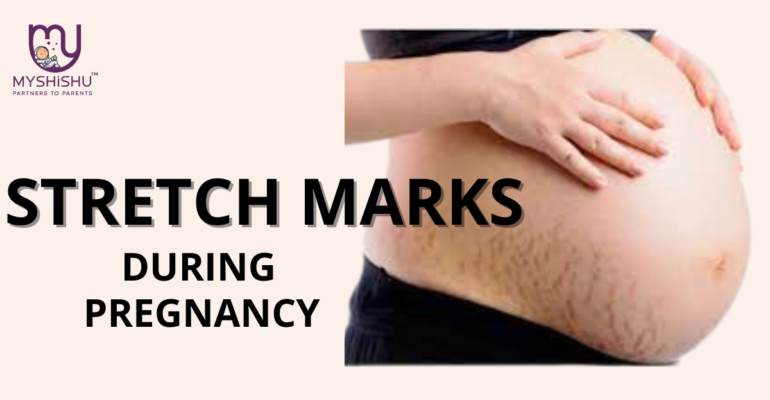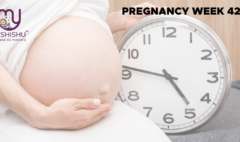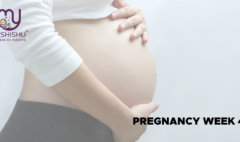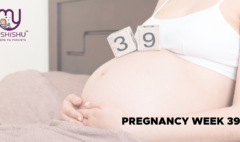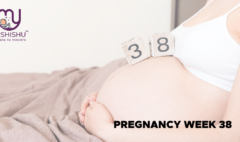Stretch Marks & Motherhood: A Comprehensive Guide for the Scars of Pregnancy
Stretch Marks & Motherhood: A Comprehensive Guide for the Scars of Pregnancy
One common concern that many expectant mothers face is the development of stretch marks. These streaks or lines on the skin can appear during pregnancy due to various factors. In this article, we will explore the causes of it, methods for prevention, and potential treatments for minimizing their appearance. Pregnancy is a beautiful and transformative journey, but it often comes with physical changes that can be both exciting and challenging.
Introduction Preventing Stretch Marks
Stretch marks, medically known as striae gravidarum, are narrow bands or lines that develop on the skin’s surface. They typically have a different texture and color than the surrounding skin, ranging from pink or red to purple or brown. Over time, they may fade to a lighter color. Pregnancy stretch marks are striations or streaky indentations in the skin that are pink, red, purple or brown. The medical term is ‘striae gravidarum’, which is Latin for stripes of pregnancy. They are very common, and typically appear on the abdomen, breasts, thighs, buttocks, and even upper arms.
Causes of Stretch Marks During Pregnancy
- Rapid Growth of the Belly: As the baby grows, the skin on the abdomen stretches to accommodate the expanding uterus, leading to the formation of stretch marks.
- Hormonal Changes: Pregnancy hormones, particularly cortisol and estrogen, play a role in the elasticity of the skin. Fluctuations in these hormones during pregnancy can contribute to the development of stretch marks.
- Genetic Predisposition: A family history of it may increase the likelihood of an individual developing them during pregnancy.
- Weight Gain: Rapid weight gain during pregnancy, not limited to the baby’s growth but also affecting the mother’s body, can contribute to the formation of stretch marks.
- Collagen and Elastin Changes: The proteins collagen and elastin provide the skin with its elasticity. During pregnancy, hormonal changes can affect the production of these proteins, making the skin more prone to stretching and the development of it.
Preventing Stretch Marks
While it’s challenging to completely prevent stretch marks, there are steps you can take to minimize their likelihood and severity:
- Hydration: Staying well-hydrated is crucial for skin elasticity. Drink plenty of water to help maintain the skin’s hydration from the inside out.
- Healthy Diet: A balanced diet rich in vitamins and minerals, especially those promoting skin health like vitamin E and C, can support the skin’s elasticity.
- Gradual Weight Gain: Aim for a gradual and steady weight gain during pregnancy. Sudden weight changes can increase the risk of them.
- Moisturizing: Regularly apply moisturizers or oils to keep the skin hydrated and supple. Products containing ingredients like cocoa butter, shea butter, or almond oil are often recommended.
- Regular Exercise: Engage in safe and appropriate exercises to promote overall health and wellness. Exercise can help with weight management and skin elasticity.
Treatment Options for Stretch Marks
While stretch marks may not disappear entirely, several treatments can help reduce their appearance:
- Topical Creams and Ointments: Over-the-counter creams containing ingredients like retinoids, hyaluronic acid, or alpha hydroxy acids may help improve the appearance of it. Consult with your healthcare provider before using any products during pregnancy.
- Prescription Medications: In some cases, your healthcare provider may prescribe medications like tretinoin to aid in reducing the appearance of it. However, these medications are not suitable for use during pregnancy and breastfeeding.
- Laser Therapy: Various laser treatments can stimulate collagen production and improve the color and texture of it. Consult with a dermatologist to explore safe options during and after pregnancy.
- Microdermabrasion: This procedure involves exfoliating the outer layer of the skin, promoting the growth of new skin cells. It may help improve the texture of them.
- Micro needling: Tiny needles are used to create controlled micro-injuries in the skin, stimulating collagen production. Micro needling can enhance the appearance of them.
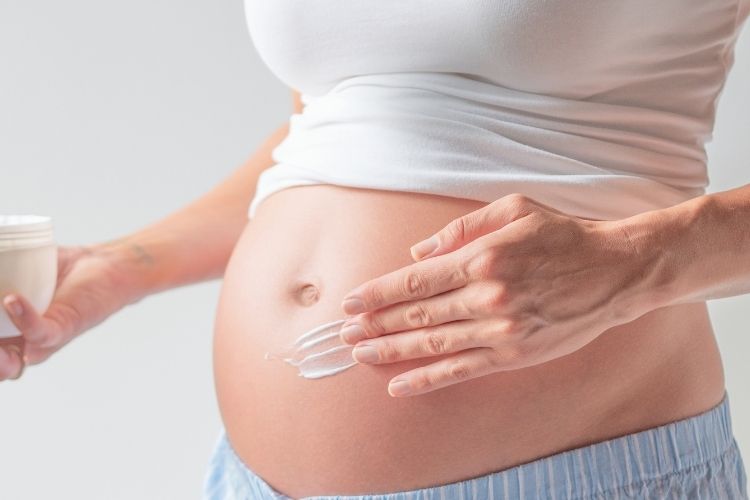
Is it Possible to Get Rid of Stretch Marks After Pregnancy?
Stretch marks may not disappear totally, but after the pregnancy is over, they can eventually become a less noticeable silver color. Indulging in a massage might help you relax and feel better, but be mindful of any misleading claims about the ability of any pregnancy stretch marks creams, lotions and oils to remove or prevent it. Some women like to try natural or Ayurveda treatments for stretch marks, but these offer no guarantee for stretch mark removal. Laser treatment is a technique some women consider in consultation with their doctors.
You might be worried about the changes your body goes through as a result of pregnancy, but your body’s doing an incredible job protecting your little one as he gets ready to meet the world. These stripes are a testament to all you’ve done.
Are Stretch Marks Painful Or Dangerous?
- If you’ve never had stretch marks before, you might wonder if they’re painful or dangerous. The good news is that while they’re unsightly, they are neither painful nor dangerous.
- In fact, the majority of women will get them during their pregnancy (sorry to break it to you). And they’re no worse for the wear!
- If you have the urge to scratch your stretch marks, this is also common. Itchy stretch marks probably mean you have dry, itchy skin.
- But another cause of itching is a pregnancy rash called PUPPP or PEP. This itchy rash begins in them and spreads to other areas. While it’s fairly common, doctors aren’t quite sure what causes PUPPP.
- Regardless, this annoying rash is harmless to both mom and baby and goes away by itself within a couple of weeks after delivery.
- But enough of the technical stuff! Let’s get to the best ways to reduce the appearance of them during pregnancy.
Conclusion
While stretch marks are a common occurrence during pregnancy, it’s essential to remember that they are a natural part of the body’s adaptation to the changes brought about by childbirth. Embracing these changes and prioritizing self-care through hydration, a healthy lifestyle, and appropriate treatments can help manage the appearance of them and allow mothers to focus on the incredible journey of bringing new life into the world. If you have concerns about it or their treatment, consult with your healthcare provider for personalized advice and guidance.
Frequently Asked Questions (FAQs)
-
What causes stretch marks during pregnancy?
Stretch marks during pregnancy are primarily caused by the rapid stretching of the skin as the body accommodates the growth of the baby, hormonal changes, genetic predisposition, and fluctuations in collagen and elastin levels.
-
Can stretch marks be prevented during pregnancy?
While it’s challenging to prevent stretch marks entirely, maintaining a healthy lifestyle, staying hydrated, gradual weight gain, and moisturizing the skin regularly can help minimize their likelihood and severity.
-
Are stretch marks a sign of an unhealthy pregnancy?
No, they are a natural result of the skin stretching to accommodate the growing baby. They are not indicative of the overall health of the pregnancy.
-
Do stretch marks go away after pregnancy?
While they may fade over time, they usually do not completely disappear. However, their appearance can be minimized with various treatments.
-
Are stretch marks permanent?
they are generally permanent, but their color and texture can improve with time and the use of certain treatments.
-
Can I use creams and oils to prevent stretch marks during pregnancy?
Moisturizing the skin with creams and oils can help keep it hydrated and supple, potentially reducing the severity of them. However, there’s no guarantee that they will prevent them entirely
-
Is it safe to use over-the-counter stretch marks creams during pregnancy?
Before using any over-the-counter products during pregnancy, it’s advisable to consult with a healthcare provider. Some ingredients may not be suitable for use during pregnancy.


